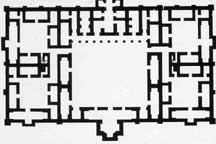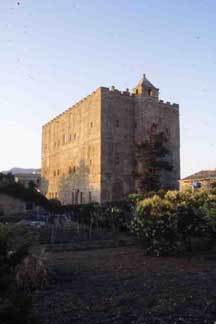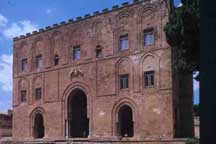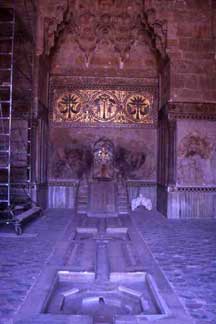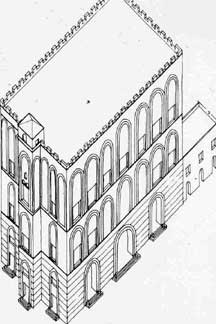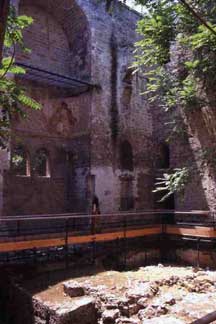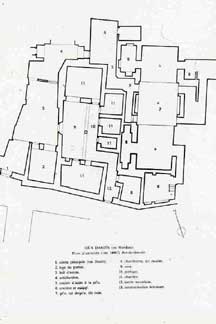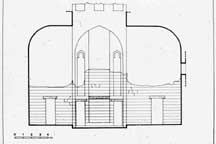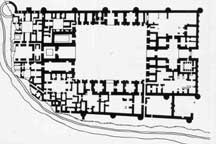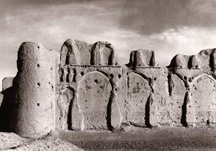AGA KHAN PROGRAM FOR ISLAMIC ARCHITECTURE
Course 4.611/4.613:
7-Palaces, Houses, and Halls types between the 9th and 12th Century: (Click on images to enlarge)
Qa‘a:
Probably the most common hall type in medieval residential architecture, the qa‘a normally has two iwans facing each other on the main axis, with wall recesses on the two remaining sides, while the central space, called the durqa‘a which literally means the entry to the qa‘a, is one step lower and is covered with a wooden cupola called shukhsheikha.
The Palace of Ziri in Ashir, Algeria:
Built by Ziri, a Berber supporter of the Fatimids in 947, it gives us a glimpse on the early Fatimid palatial architecture. It is formed of a square central court surrounded by four equal bayts, different from both its Umayyad and Abbasid precedents. The formal axis from the gate across the court leads to a domed triclinium that served as the throne hall.
The palace of Ziri in Ashir in Algeria; plan |
La Zisa Palace, Palermo, Sicily:
Built by the Normand king Roger II between 1154-66. It represents the most complete example of a garden pavilion built by Muslim craftsmen after the Fatimid model. Its plan resembles that of the Ziri throne hall, with the addition of that most impressive water element, the shadirwan or salsabil, which is a slanted slab on the wall upon whose surface the water gurgles down to a channel whence it is collected in a central fountain.
La Zisa Palace; back view |
La Zisa Palace; main facade |
La Zisa Palace; Chadirwan |
Axonometric reconstruction of La Zisa Palace |
La Zisa Palace plan |
La Cuba Palace, Palermo, Sicily:
Attributed to Roger II or his successor and dated to 1180, this palace-pavilion sits within a pool. It follows the plan of the early qa‘a in its organization, possibly echoing the development in reception hall arrangement in the Fatimid realm.
La Cuba Palace; court iwan |
The Qa‘a al-Dardir:
Among the earliest Cairene qa‘as, its iwans are barrel-vaulted, and its central space, later known as durqa‘a, had twelve windows and central wooden lantern. The qa‘a may have been a development out of the majlis plan under the urban pressures of the crowded metropolis.
Floor plan of Al-Dardir House |
Section through Al-Dardir qa'a |
Lashkari Bazar South Palace, Near Bust in Afghanistan:
One of the rare surviving palaces of the eastern Islamic lands between the 10th and 13th centuries, it belonged to a huge complex that extended for 4 km along the river. It follows the model of early Umayyad and Abbasid palaces, with an emphasis on the cruciform hall plan of Khurassan (reminiscent of the palace of Abu Muslim in Merv).
Lakshari Bazar South Palace plan |
Exterior view of Lakshari Bazar South Palace |
